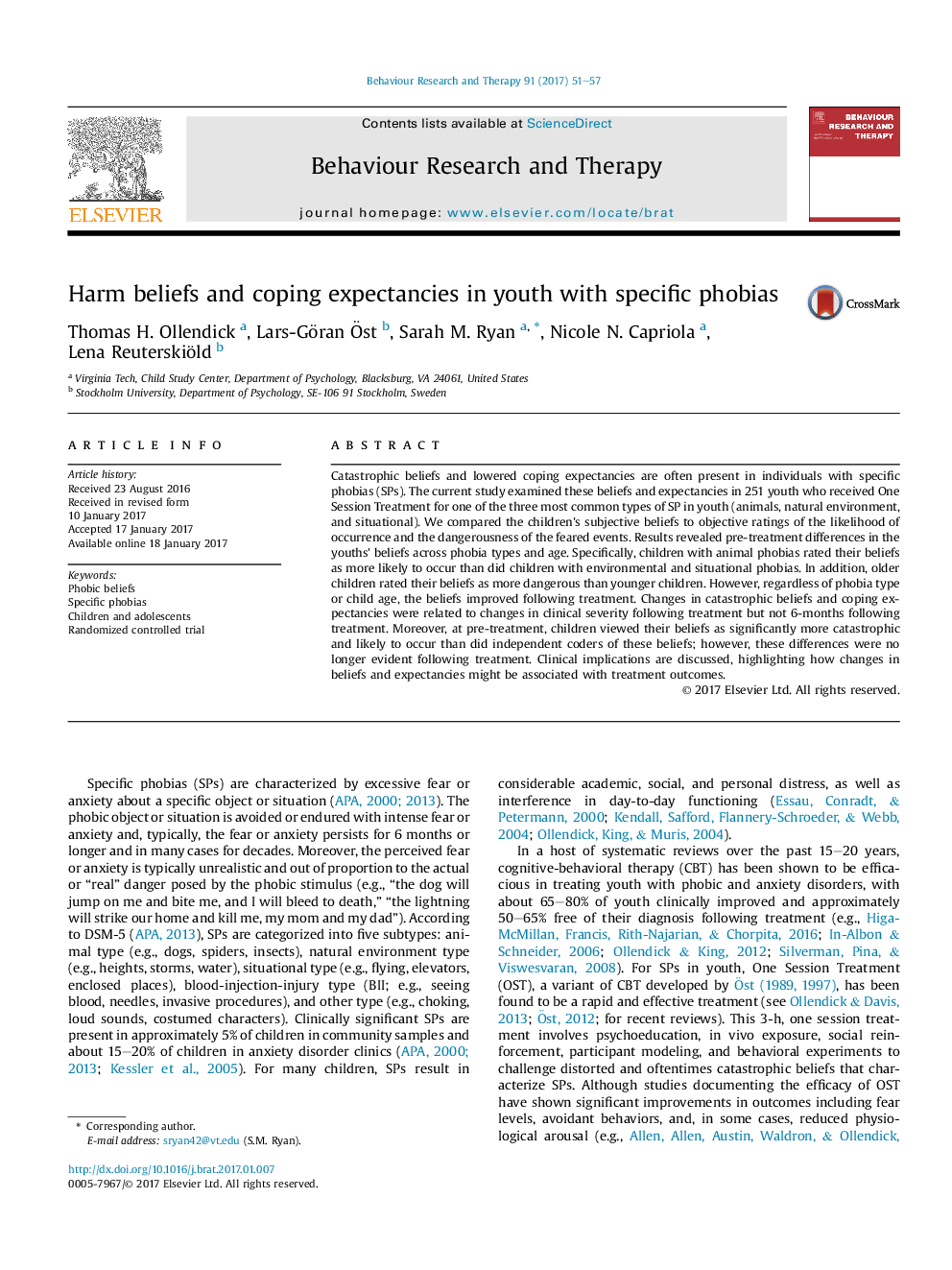| کد مقاله | کد نشریه | سال انتشار | مقاله انگلیسی | نسخه تمام متن |
|---|---|---|---|---|
| 5038214 | 1472758 | 2017 | 7 صفحه PDF | دانلود رایگان |
- Youth with a specific phobia identified feared beliefs and coping expectancies.
- Differences exist in youth's catastrophic beliefs across phobia types and age.
- Youth viewed their beliefs as more catastrophic and likely to occur than did coders.
- Regardless of phobia type or child age, the beliefs improved following OST.
- Changes in beliefs were related to changes in clinical severity following treatment.
Catastrophic beliefs and lowered coping expectancies are often present in individuals with specific phobias (SPs). The current study examined these beliefs and expectancies in 251 youth who received One Session Treatment for one of the three most common types of SP in youth (animals, natural environment, and situational). We compared the children's subjective beliefs to objective ratings of the likelihood of occurrence and the dangerousness of the feared events. Results revealed pre-treatment differences in the youths' beliefs across phobia types and age. Specifically, children with animal phobias rated their beliefs as more likely to occur than did children with environmental and situational phobias. In addition, older children rated their beliefs as more dangerous than younger children. However, regardless of phobia type or child age, the beliefs improved following treatment. Changes in catastrophic beliefs and coping expectancies were related to changes in clinical severity following treatment but not 6-months following treatment. Moreover, at pre-treatment, children viewed their beliefs as significantly more catastrophic and likely to occur than did independent coders of these beliefs; however, these differences were no longer evident following treatment. Clinical implications are discussed, highlighting how changes in beliefs and expectancies might be associated with treatment outcomes.
Journal: Behaviour Research and Therapy - Volume 91, April 2017, Pages 51-57
